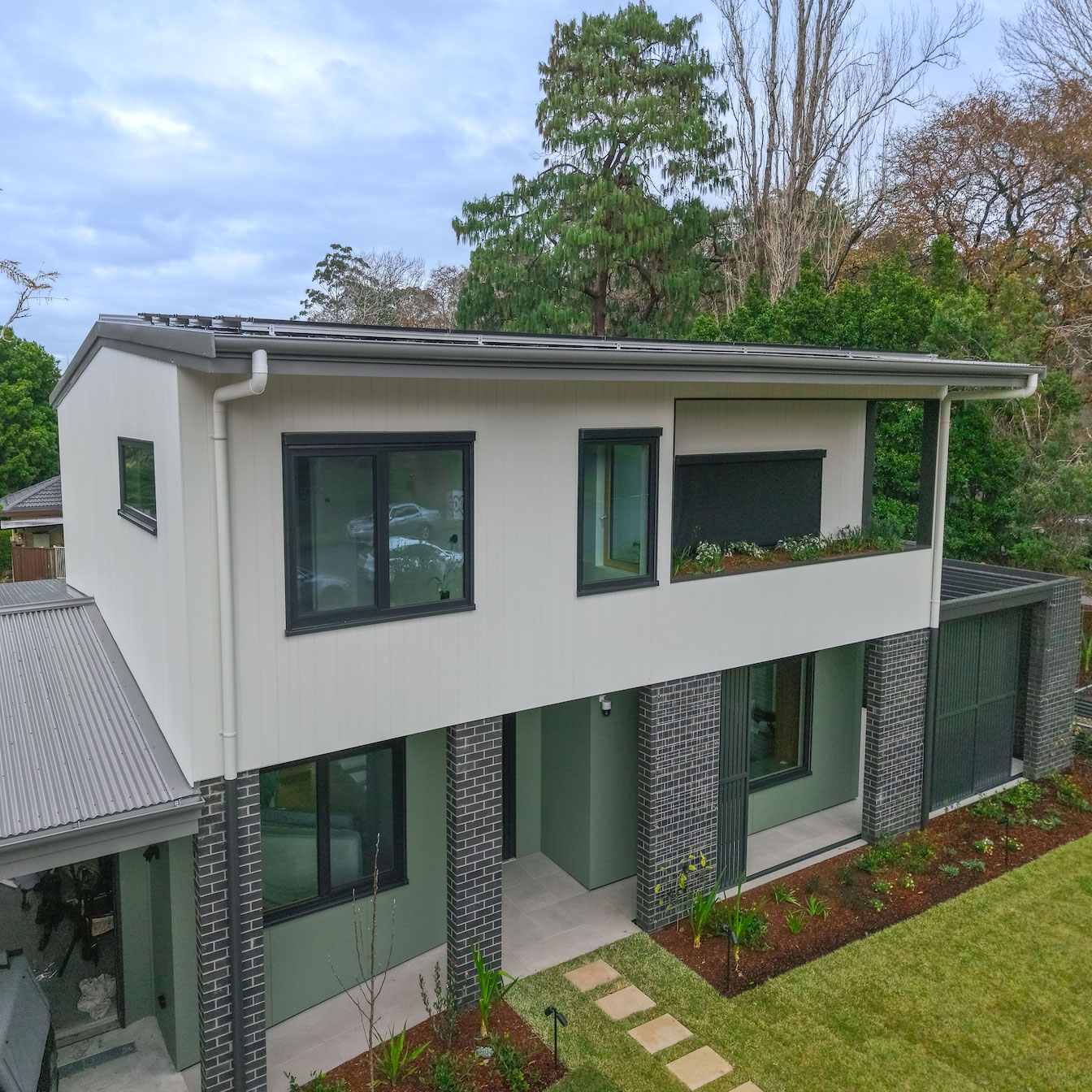Factoring the wellbeing of the environment and people into every design decision

Envirotecture has been designing sustainable buildings since before sustainable became a buzzword—since 1995 when environmental activist, changemaker and visionary designer Dick Clarke founded the firm.
The directors are all thoroughly versed in passive solar design and the way it uses orientation, sun angles and ventilation pathways to warm and cool buildings. We bring that foundational knowledge to our Passivhaus design work, involving and controlling those elements to best effect in any given context.
Any discussion about sustainable buildings needs to start with a frank consideration of size. How big is enough? Australian houses are now, on average, among the largest in the world. Our practice rates quality over quantity. Smart design can shrink a home’s floor area without impacting functionality or aesthetics.
Healthy materials
Our designs use materials and construction methods that are healthy for people and have least impact on the environment. We have experience specifying alternative building materials like straw bale and natural renders and new developments like hempcrete. We are equally confident in designing modern homes, offices or public buildings with contemporary finishes, but ones that don’t cost the earth or harm the people that make, transport, fit or maintain them.
Universal design
Sustainability is about people too. For instance, we like to design homes with flexible floor plans that can be reinvented as the needs of the people that live in them change over time. We’re familiar with universal design, those specific geeky details that welcome grandchildren to grandparents (and everyone in between) and which support people to stay in their homes as they age.
‘Localness’
For us, sustainability is also about designing buildings that fit their place. We talk about ‘localness’. To us, this means respecting and engaging with the context of any existing or new building. How would a design best fit into its surrounding natural environment, but also the historical and built surroundings?
Our designs work with nature rather than struggle to impose against it. We strive to connect to the language of the place, respecting the singularity of a particular site and region, whether that is coastal, nestled in bush or part of a thriving inner-city neighbourhood. It might be expressed through the use of a local stone, the highlighting or blocking of a specific view or adapting to specific climate patterns.
Design for bushfires
We design structures that are better prepared to survive bushfires, with expertise in creatively meeting the requirements of Bushfire Attack Level (BAL) ratings. The ways we approach architectural design knit together to create more resilient buildings.
For instance, Passivhaus buildings are inherently smoke tight and their ventilation systems help filter out bushfire smoke. And because they need only small amounts of energy to heat and cool, they draw less from the grid during heatwaves and make it easier to stay comfortable in case of blackouts.

"As an architect, I take a sweeping view of what sustainable means. We’re past the point of ‘doing less harm’, we need to actively ‘do more good’. The Gardenhaus stands out for me because we accomplished very many things. Yes it’s energy efficient, and a comfortable and healthy place to live.
And it also reflects the strong design aesthetic of the clients and their wishes for a deep connection between the home and the natural environment it sits in. There were purposeful choices of materials in order to reduce the project’s embodied carbon and to incorporate biophilic elements. It was designed to support ageing in place and to reduce bushfire risk.
In the midst of overlapping crises, there is immense satisfaction in working on legacy projects like this, designing houses that will be home to successive generations."





